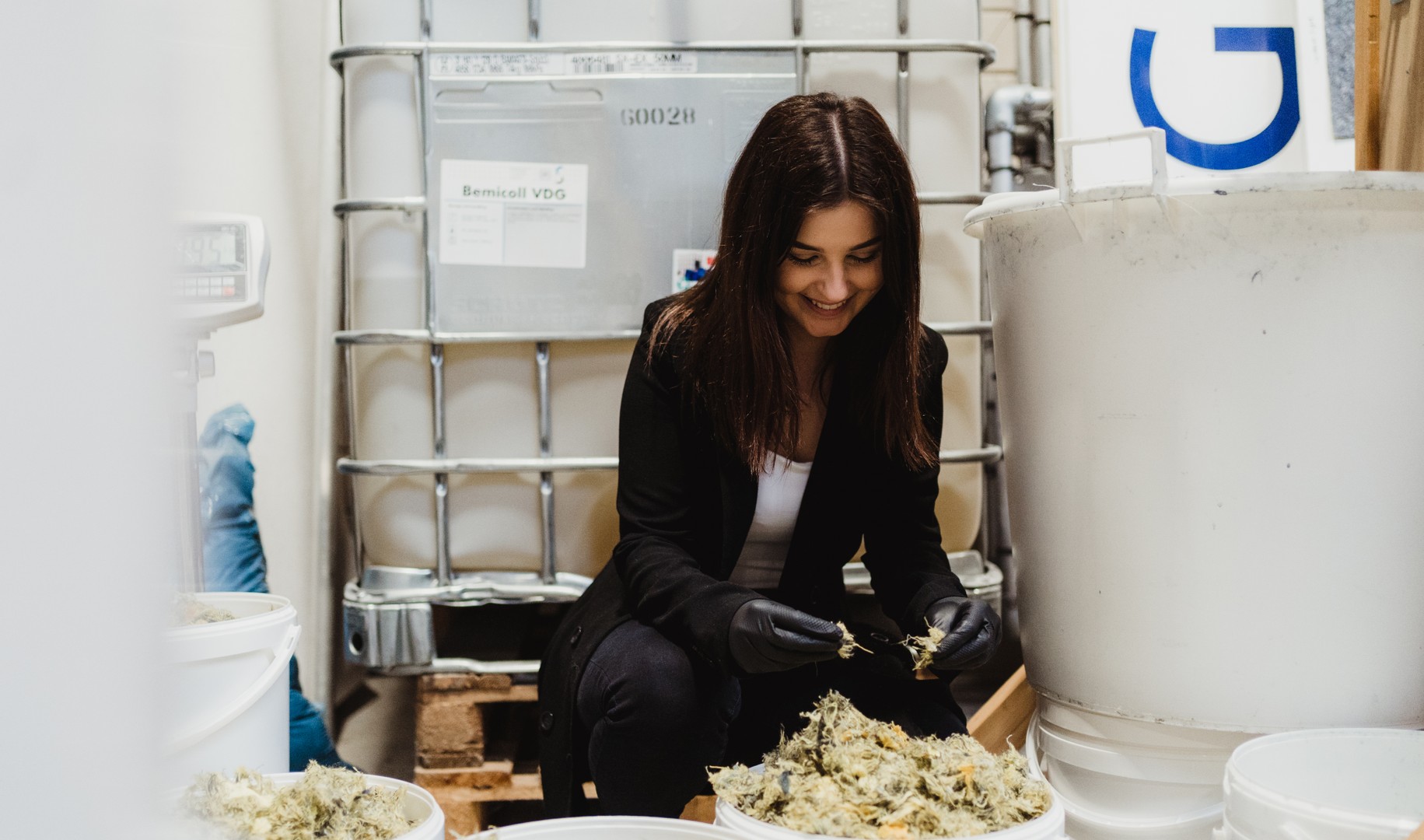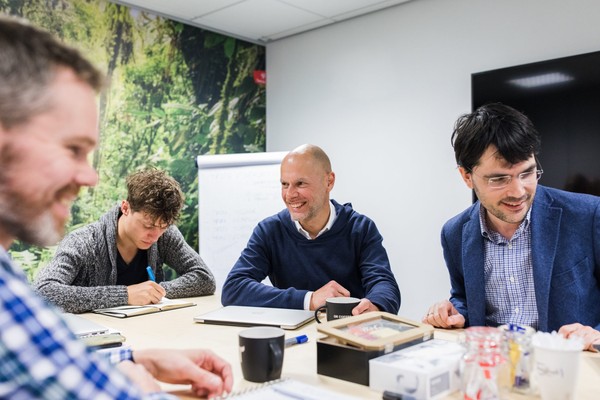cases >> Hoe gaat het nu met Denimtex?
STUCCO MADE FROM JEANS FIBERS.

STUCCO MADE FROM JEANS FIBERS.
It has been a while since we spoke to Gebroeders van der Geest about their Innovate GO innovation: Denimtex, a type of stucco made from jeans fibers. The company has not been resting on its laurels in the meantime. High time to catch up with managing director Kathrin Vulic.
Although the Innovate GO program ended quite some time ago, Kathrin still sees the effects of the innovation accelerator. “Before we got involved with Innovate GO, we had been in the game for six years already. Other than product development, though, we did not have a real foundation for a business yet. The three hypotheses we worked on in Innovate GO ultimately became that foundation. We are now building our company on the groundwork we laid back then. We can feel the effects to this day.”
New ways to innovate
It is clear to see what Kathrin means. Last year, she already mentioned that the company wanted to develop a textile paint and offer new residual streams from the local market. “We are currently working on all those things,” Kathrin continues. “Shredding jeans produces a powder that we used to dismiss as waste. However, we learned that by combining this powder with water, it can be used as paint, whereby the powder serves as a pigment. This has allowed us to create a new product out of our own waste stream.” The company also upcycles local residual streams. “We are working together with Coulisse, a curtain manufacturer from Enter, to give the waste coming out of their company a new lease on life in the form of wall decorations. It is shaping up to be an amazing project!”
For future generations
Everything Denimtex does is inspired by the company’s mission: to create a better world for future generations. “640 million pairs of jeans are thrown away annually, resulting in an enormous volume of emitted CO2. ‘Saving’ those old jeans gives our company a negative carbon footprint. We are also looking at the composition of the adhesive we use to produce Denimtex. We sometimes spend as much as two years looking for the most environmentally friendly ingredients. We have now reached the point where our label no longer has any warnings on it. We are certainly proud of that milestone. Our goal is to be transparent about these things. That is also why we have posted our life cycle analysis on our website. We intend to revise it every year: can we do even better? What new developments are there, and can we further expand our knowledge somehow? I always keep a close eye on the market to see what the best and most circular option is for us.”
Global impact
The company recently switched to a new supplier for Textile on the Wall, a product group with twenty-five trend colors. “We want our partners to be based somewhere in Europe. After all, the greater the distance, the larger the volume of carbon emissions.” Nevertheless, the company has a global impact and helps businesses all over the world become circular. “For example, we have formed a partnership with Tommy Jeans. Their old jeans are sent to our recycling partner, we turn them into wallpaper, and they put that on the walls of their stores worldwide. We stimulate businesses to create their own circular economy.” Denimtex’s ambition will soon receive legislative support. Per 1 January 2023, textile producers will be responsible for recycling their own products. “That is good news for us, as we can capitalize on this development to help even more businesses.”
Dreams for the future
Things are clearly going well for Denimtex, although that success does come with its share of challenges. “We need talent, and we are also still largely dependent on subsidy. After spending five years on product development, we were ready to go to market last January. Whereas our challenges used to lie in product development, they now have to do with sales, our target group, and the demand for our products.” Fortunately, Denimtex is not in it alone. “We are working together with Aveleijn, a social workshop located just five minutes away from Denimtex. People with a mental disability are lending a hand in our production process, and they enjoy that very much. At the same time, this allows us to create social impact.”
The goal is for Denimtex to eventually become a private company. Kathrin can already envision it now. “Our own building with a warehouse and a large logo out front, an R&D team working in a lab, a cool denim office for our marketing and sales teams, and a modern showroom that is updated every year. I have built up a very clear mental picture. Hopefully, we can generate enough revenue this year to bring that dream one step closer!”

"I always keep a close eye on the market to see what the most circular option is."
Kathrin Vulic
managerMore about
Hoe gaat het nu met Denimtex?
It has been a while since we spoke to Gebroeders van der Geest about their Innovate GO innovation: Denimtex, a type of stucco made from jeans fibers. The company has not been resting on its laurels in the meantime. High time to catch up with managing director Kathrin Vulic.






